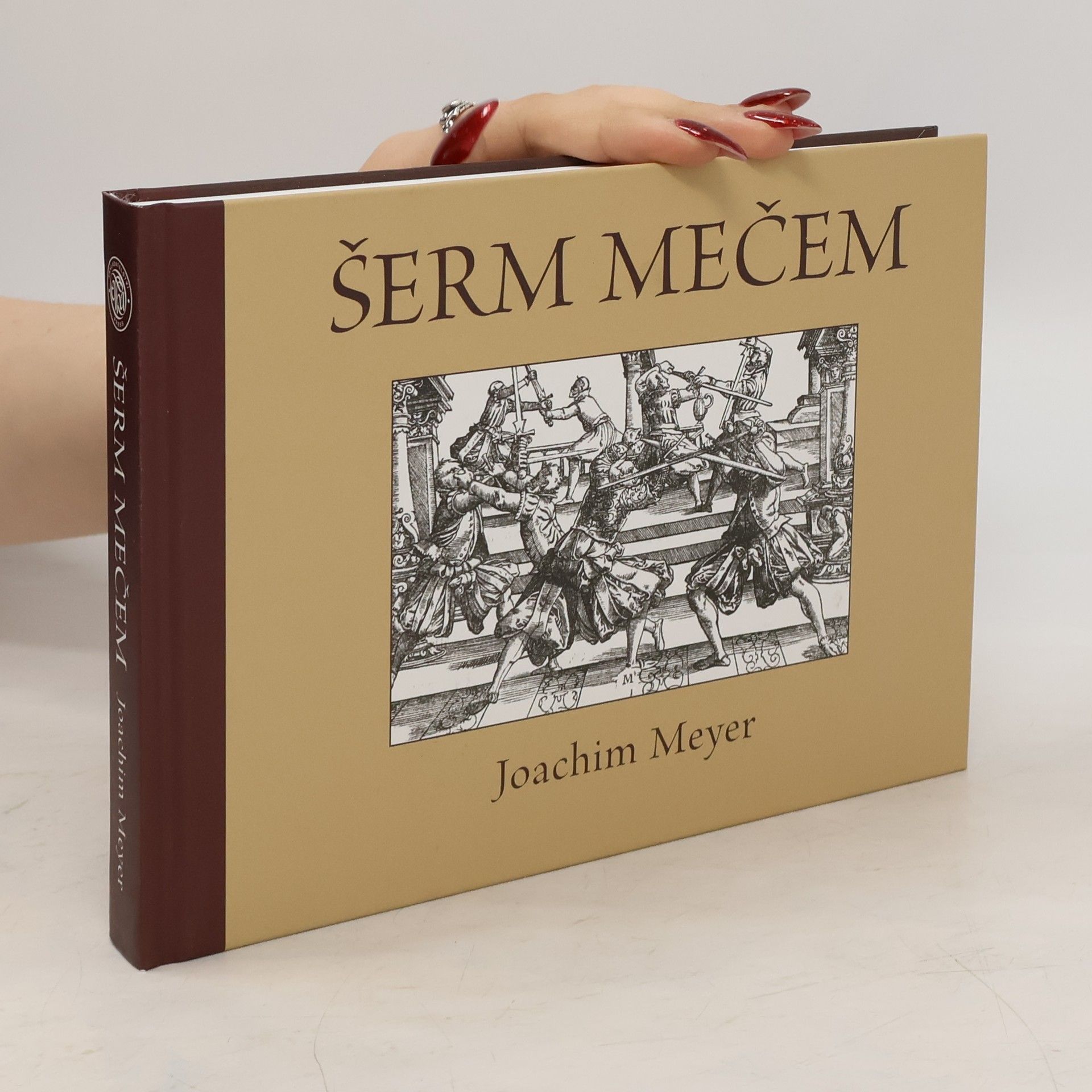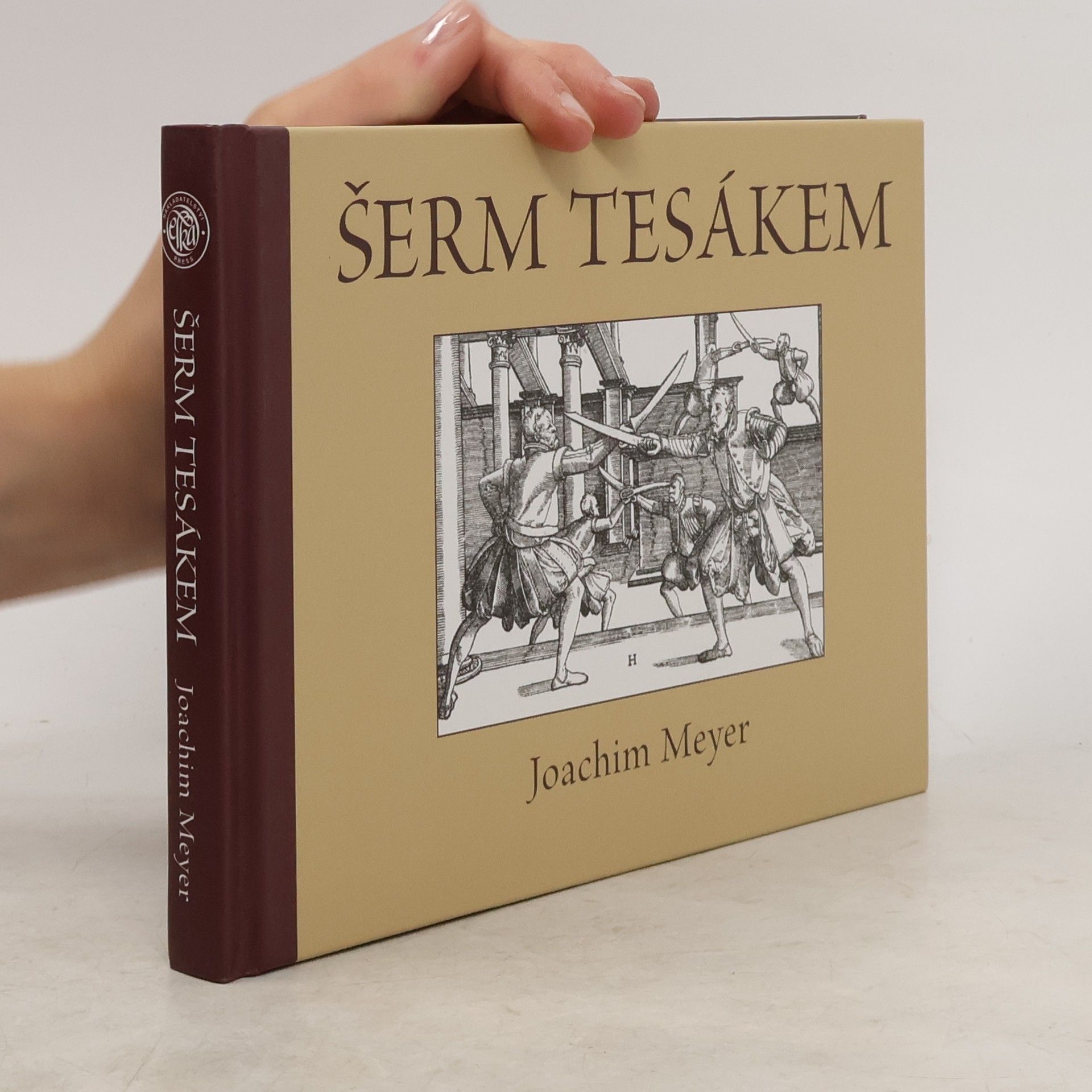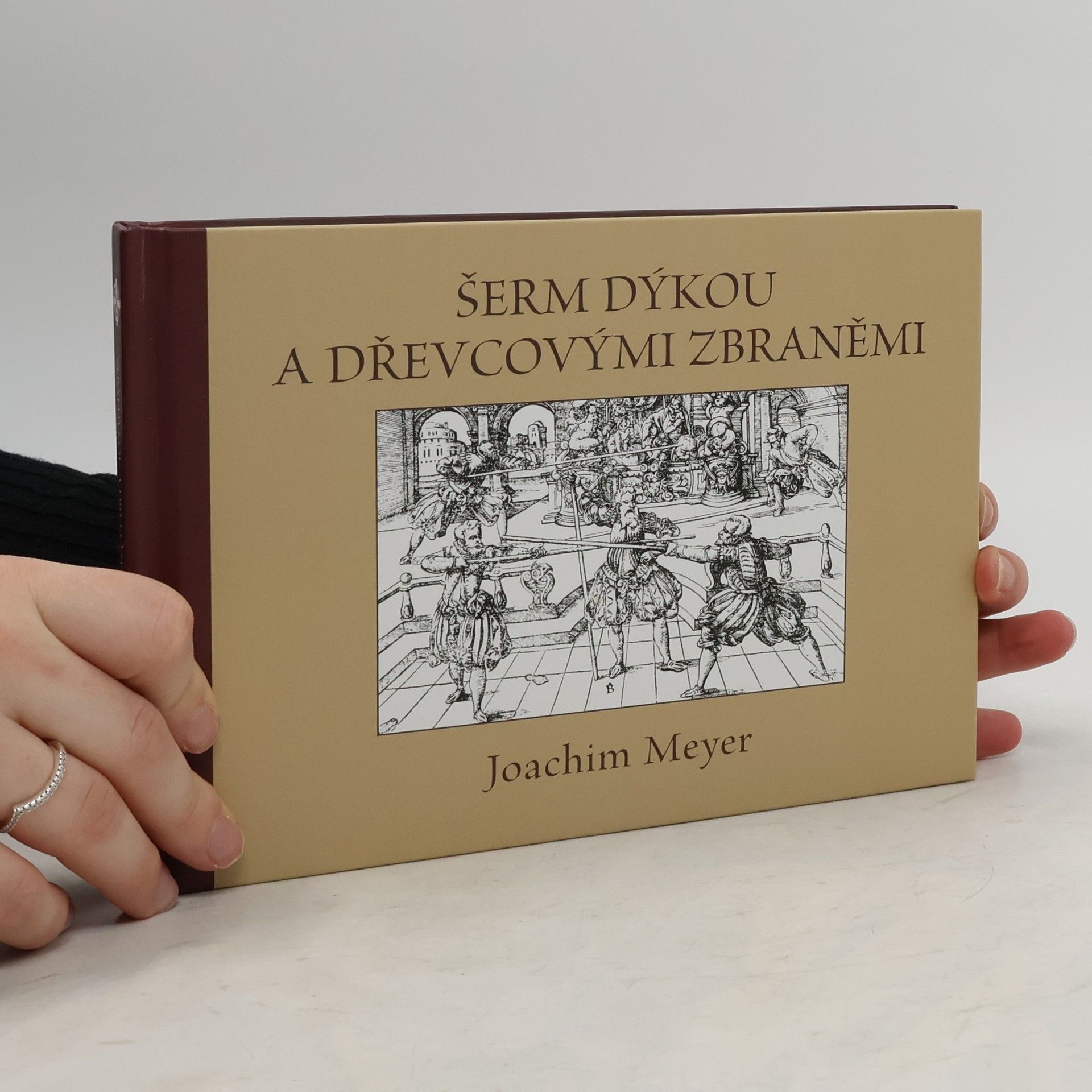First ever English translation of this classic 16th-century combat treatise, it includes the first substantial introduction to the medieval German martial arts tradition and a Glossary of technical terms. A crucial source for understanding the history and techniques of medieval and Renaissance martial arts
Sandra Joachim-Meyer Libri






The art of sword combat
- 208pagine
- 8 ore di lettura
Following the success of Jeffrey L. Forgeng's translation of Joachim Meyer's The Art of Sword Combat the author was alerted to an earlier recension of the work which was discovered in Lund University Library in Sweden. The manuscript, produced in Strassburg around 1568, is illustrated with thirty watercolor images and seven ink diagrams. The text covers combat with the long sword (hand-and-a-half sword), dusack (a one-handed practice weapon comparable to a saber), and rapier. The manuscript's theoretical discussion of guards is one of the most critical passages to understanding this key feature of the historical practice, not just in relation to Meyer but in relation to the medieval combat systems in general. The manuscript offers an extensive repertoire of training drills for both the dusack and the rapier, a feature largely lacking in treatises of the period as a whole but critical to modern reconstructions of the practice. The translation also includes a biography of Meyer, much of which has only recently come to light, as well as technical terminology, and other essential information for understanding and contextualizing the work.
Highlighting the beautiful forms and various applications of calligraphy in Islamic art Calligraphy means 'the art of writing beautifully'. Driven by its use in the Koran, artfully executed Arabic script became a key religious and political marker at a very early stage; since then calligraphy has played a central role in the Islamic world. In addition to appearing on paper, artful writing can be found on everything, from coins, weapons, dishes, lamps and textiles to the façades and interiors of buildings. The many types of texts offer rich and varied insights into Islamic art, culture and societies. Beyond Words presents 128 objects featuring calligraphy, most notably from The David Collection. In addition, the book contains articles on such subjects as the Arabic alphabet, classical scripts, the calligraphers and the different types of texts. The publication also explores the use of Arabic lettering in earlier European art and in modern-day Arabic graffiti.
Foundational Description of the Art of Fencing
The 1570 Treatise of Joachim Meyer (Reading Edition)
- 478pagine
- 17 ore di lettura
Joachim Meyer, a prominent fencing master and cutler, achieved notable success in his brief life, educating both craftsmen and nobility. He authored several influential fencing treatises that gained widespread recognition beyond his homeland, becoming reference points for other writers for over a century after his passing. Meyer's contributions significantly shaped the art of fencing during his time and left a lasting legacy in martial arts literature.
Šerm mečem
- 304pagine
- 11 ore di lettura
Mezi nejpopulárnější učebnice šermu patří dílo Joachima Meyera, německého šermířského mistra z 16. století. Meyer, který žil přibližně v letech 1537–1571, napsal minimálně tři učebnice, přičemž vycházel z tradice mistra Liechtenauera a seznámil se i s italskou školou. Jeho komplexní učebnice pokrývá širokou škálu zbraní a ovlivnila mnohé následovníky, což platí i dnes. Meyer je považován za „nejproslulejšího z raných německých spisovatelů o šermu“. Jeho dílo se skládá ze tří knih, které zahrnují pět částí podle typů zbraní: dlouhý meč, tesák, rapír, dýku, zápas, halapartnu a píku. Pro každou zbraň stanovuje principy použití, vytváří slovník technik a popisuje metody útoků a jejich kombinací. Názorné dřevořezy usnadňují pochopení technik. Meyer klade důraz na dlouhý meč, který považuje za „nejobratnější a nejmužnější ze všech zbraní“. Tento reprint přináší část Meyerova díla v českém překladu spolu s německým textem, což umožňuje čtenářům srovnání a usnadňuje porozumění archaické němčině. Díky historickým ilustracím je tento reprint cenný nejen jako učebnice šermu, ale také jako důkaz renesanční knižní a grafické tvorby.
Šerm rapírem
- 264pagine
- 10 ore di lettura
Třetí část překladu zlomové knihy Joachima Meyera, známé díky citacím v literatuře a dostupné v reprintech, nese název Šerm rapírem. Meyer, německý šermířský mistr, vytvořil komplexní učebnici šermu s širokým spektrem zbraní, která ovlivnila jeho následovníky a dodnes má význam. Meyerův rapír je zbraň s bodnou i sečnou funkcí, což dokládají vyobrazení s košem, dlouhou rovnou záštitou, postranními prstenci a záštitním lučíkem. Na rozdíl od klasického bodného rapíru má širší a pádnější čepel. Meyerův systém šermu spojuje techniky tradičních německých zbraní s metodami jeho italského současníka di Grassi. Zbraň je vhodná nejen pro přátelský šerm, ale i pro skutečný boj. Meyer také popisuje použití rapíru v kombinaci s dýkou a zmiňuje obranu proti rapíru, použití s pláštěm a v boji proti dřevcové zbrani. Meyerův rapír je tedy považován za ideální zbraň pro sebeobranu. Jeho metodika ovládání této zbraně představuje cenný příspěvek do mozaiky evropských bojových umění. Překlad je vydáván souběžně s německým textem, což čtenářům usnadní porozumění archaické němčině při nácviku šermu.
Šerm tesákem
- 216pagine
- 8 ore di lettura
Joachim Meyer byl svobodný šermíř ze Štrasburku, který v roce 1570 vydal rozsáhlé dílo pojednávající o rytířském umění šermu. Výborné didaktické a metodické pokyny činí tuto učebnici výjimečnou i dnes a nabízí laskavému čtenáři možnost nejen teoretického, ale i praktického vhledu do šermířského řemesla druhé poloviny 16. století. Jako základ všech zbraní uvádí autor učebnice šerm dlouhým mečem, ale zbraní nejvíce rozšířenou a užívanou v jeho době byl, jak sám J. Meyer uvádí, tesák. Tato druhá část překladu Meyerova díla, ŠERM TESÁKEM, navazuje na již vydaný překlad ŠERM MEČEM. Unikátnost Meyerova textu spočívá v detailním a přesném popisu jednotlivých pohybů včetně jejich časování, precizního popisu principů a uvádí desítky modelových příkladů, na kterých si cvičenec může umění šermu tesákem osvojit. Učebnice je doplněna bohatou obrázkovou galerií cennou zejména pro zájemce o praktickou rekonstrukci. S českým překladem uveřejňujeme souběžně faksimile německého originálu.
Poslední část autorova díla se věnuje šermu dýkou a jeho technikám. V knize je také popis boje holí, která je základem všech dřevcových zbraní. Navazuje úsek věnovaný halapartnám. Střehy, obrana, útok, techniky a psychologie boje. Boj píkou.


